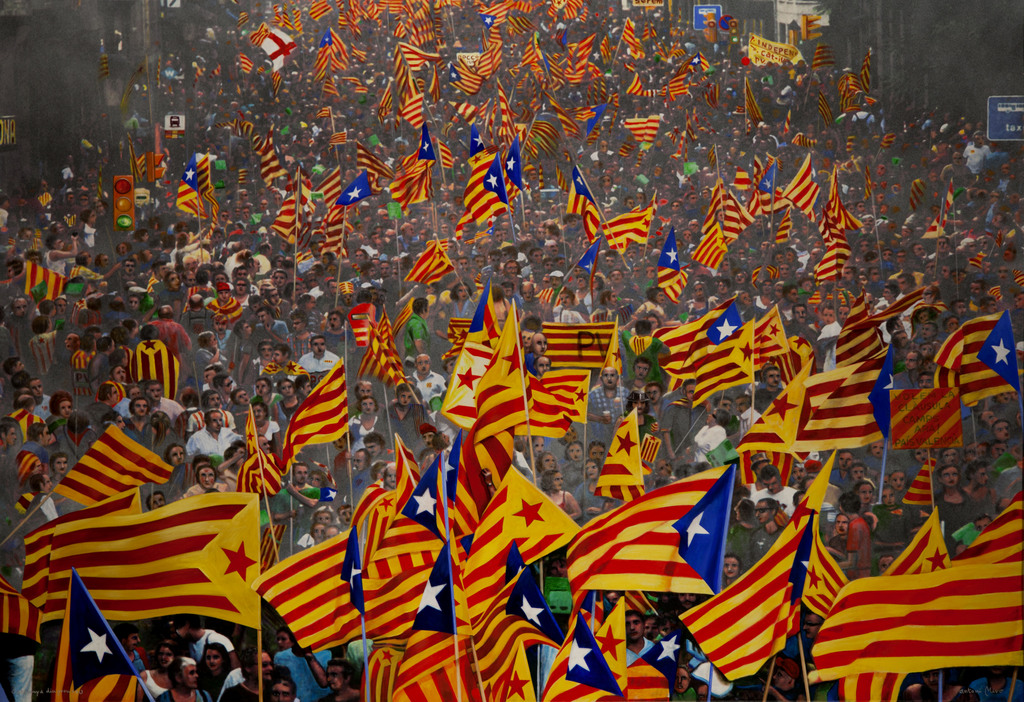Catalunya diu prou (Catalonia says ‘enough’)
This work is embodied in the “Mani-festa” series, through which the artist interpreted the tumultuous social events of the period. Romà de la Calle argues that the series of works “openly reflects the surrounding pulse of our complex lives during these critical, hard, and committed times”. Right from the beginning of his career, the artist has constantly defended his own culture. Many critics have highlighted his sensibilities in this respect, and his uncompromising struggle against imperialism and oppression.
In short, in this series Antoni Miró paints what happens around him. In this work, he focuses on the identity of the Catalan people, defending the link between nationalism and upholding one’s own culture. The painting reflects the Diada of 2013 [Catalonia’s National Day]. The scene is one of a Barcelona street packed with demonstrators holding countless flags and demonstrating for Catalonia’s independence from Spain. The artist chooses an aerial view that is based on a shot from one of the traffic control cameras mounted over the centre of the road. The photo was widely disseminated by the media. The depth of the street is enhanced thanks to the graduation of the size of the elements, which shrink towards the top and become less and less well-defined as the crowd and other things recede into the distance.
The foreground, at the bottom, is full of estelades (single-starred Catalan independence flags). Red, yellow and blue colours dominate this part of the composition and stand out given that the artist has used a variety of more neutral shades to make the people less prominent. Delacroix used a similar technique in his Liberté guidant le people [Liberty leading the People], in which the French tricolour is the only really colourful element in the composition.
Miró acknowledges the Catalan independence movement but renounces the allegorical approach used by Delaroix. The Valencian artist anchors his painting firmly in reality as he has done throughout his career. He seeks the ‘pictorial permanence’, alluded to by Cerdán Tato, in order to overcome the instant obsolescence that afflicts the journalistic chronicle.
Santiago Pastor Vila
